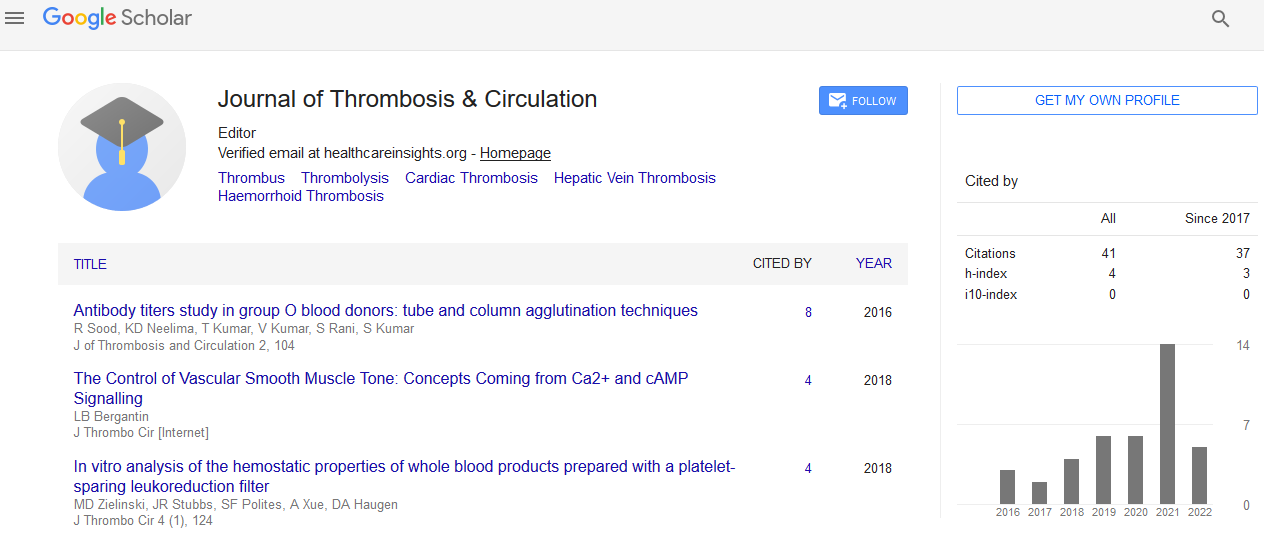Indexed In
- RefSeek
- Hamdard University
- EBSCO A-Z
- Publons
- Google Scholar
Useful Links
Share This Page
Journal Flyer

Open Access Journals
- Agri and Aquaculture
- Biochemistry
- Bioinformatics & Systems Biology
- Business & Management
- Chemistry
- Clinical Sciences
- Engineering
- Food & Nutrition
- General Science
- Genetics & Molecular Biology
- Immunology & Microbiology
- Medical Sciences
- Neuroscience & Psychology
- Nursing & Health Care
- Pharmaceutical Sciences
Abstract
Spasmophilia in the Cardiological Outpatient Department: A Retrospective Study of 228 Sub-saharan Africans over 5 Years
Ba Djibril Marie, Sow Mamadou Saidou, Diack Aminata, Diallo Cheikh Omar, Barkire Ismaila, Dieng Fatou Kine and Fall Moussa Daouda
Background: Spasmophilia also called latent tetany is a disorder with a very heterogeneous clinical manifestation which affects particulary young women. Chest pain, constriction of the throat and palpitations are symptoms common to spasmophilia and ischaemic heart disease (IHD). The objective of this work was to assess the incidence and to study the epidemiological, clinical features of spasmophilia in patients with symptoms of ischaemic heart disease.
Metods: This was a retrospective study conducted at the cardiology Department of Military Hospital of Ouakam, in Dakar, Senegal, from January 1st 2009 to December 31st 2014). We included all patients who were admitted with manifestation of ischaemic heart disease and who subsequently had a negative evaluation for IHD. We observed the occurrence of neuromuscular hyperexcitability, assessed with Electromyographic (EMG) test. We collected and analyzed epidemiological, clinical, and outcomes data of Powered by Editorial Manager® and ProduXion Manager® from Aries Systems Corporation 228 patients.
Results: the incidence of spasmophilia in patient’s reffered with symptoms of ischaemic heart disease was 20% and 100% in patients with normal ECG findings. The mean age of patients was 28.7 ± 18 years with a sex ratio (F/M) of 13.41. The most common presenting symptoms were dominated by chest pain (90%). a history of Insomnia was found in 31 patients (13.60%), and affective disorders were found in 55 patients (24.12%). Biochemical investigation revealed decreased serum magnesium in 5.26%. Medical examinations were normal. All patients were treated with magnesium lactate. 80.6% of patients reported after 3 months complete regression of complaints. 17.2% of patients continued to experience complaints with a significant improvement in terms of reduced frequency and intensity. No complications were noted in our patients after 12 months follow-up.
Conclusion: Despite its fearly common occurence, spasmophilia is rarely recognized. We recommend to add EMG test to the algorithm of examinations of patients with chest pain and normal ECG.

